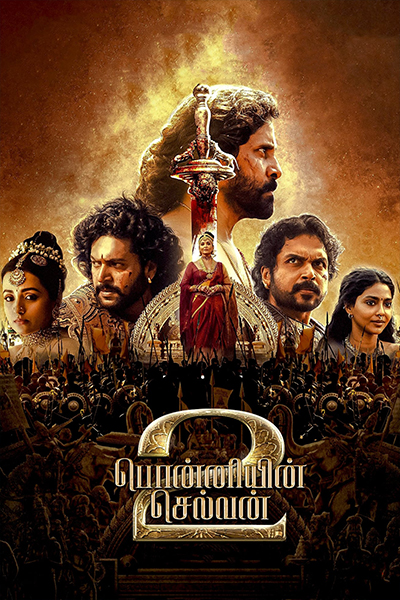

Brief, disjointed thoughts on the film.
Getting straight to it, this is a far more engaging and exciting film compared to the first. There’s more palpable drama, a denser proceeding of events. Of course, that can be attributed to the story getting to its meatier bits, but there’s a lot more happening here, even on a visual level. This film feels a lot more “alive”. To summarise what I felt about the previous instalment, I’d say that it felt too episodic, and didn’t do much to instill a soul to its characters. It was permeated by dullness, with occasional excitement in character interactions.
I’d attribute the flaws of this series to certain crafts of filmmaking as much as to the gaps in screenwriting. A lot of those issues, such as a distractingly shaky cam, choppily slowed down shots, can be spotted in this sequel as well, but with lesser frequency. There’s a lot to like in the blocking and staging that stand out a lot in here. Especially the closeups featuring more than one character in a frame – they’re a treat a watch because of how well-directed the movement and timing within those shots are. It’s not commonplace to find such intimacy in epics of this proportion in Indian films. We’ve been fed too much about goosebumps being driven by scale, rather than the intimate. The one mid-sentence pause in Karikalan when Nandini meets him in the eye, is a loud testament to the difference Mani Ratnam brings to this genre.
With this slightly fantastical setting where the world and its people can operate on a plane slightly removed from our reality, it’s a pleasure to note the exaggeration in when and how characters move in a scene. There’s always something subtle happening in that aspect, something more than pointing the camera at talking heads. This sequel is filled with more of these pleasing instances of inspiring filmmaking. The Parthibendran-Nandini meet, the scene with the three royal siblings in the monastery, Nandini at the Pandiyan gang ritual, Karikalan and Nandini’s face-off, these are scenes that I believe have a lot to takeaway with the way they’re directed.
All that said, looking at these two films in retrospect, I find a lot of choices confusing. Poonguzhali may not have much to add to the plot in the sequel, but she could have done with another beat of her character. Why is Senthan Amuthan in the films whilst serving no purpose in an already truncated storyline that requires an economical list of characters? Was he just a hat-tip/easter egg for book readers? If they just wanted a character of a commoner, why Amudhan in particular? I can think of at least 3 long-drawn out action sequences that could have paved way for the subplot of his birth. That’s also telling about the quality of the action sequences – which barely register any impact with their approach to stunt design. The assassination attempt on Arunmozhi has some good buildup of tension, but the way the final blow lands is too hurried, and therefore meek, denying a rousing finish to the whole sequence. The way that none of the action sequences in these two films can be called memorable, is a rather costly undoing.
It could be recency bias, but the heft of the story seems to have been reserved for the sequel, with the first serving as a mere setup. This is fine as a concept, but in terms of engagement, it’s a largely dull setup towards an exciting payoff. Teasing Oomai Rani at the end of the first film is a good choice to generate intrigue, but someone who is touted to be as integral to the world of this series, ends up being given rather tepid weightage in this film. I loved the moment when Vandhiyathevan tells Nandini that he saw no rage or jealousy in the old woman’s eyes, who also happens to resemble her. This is solid character building, but it somehow doesn’t materialize to something bigger in the rest of her arc. Maybe a flashcut to the past with a young Parantaka and Mandakini would’ve helped, rather than those indiscernible cave paintings?
Parthibendran Pallavan’s conclusion that Arunmozhi Varman was scheming against his elder brother Aditha Karikalan is a line of thought that isn’t convincing. What are the motivations behind his conclusion? That bit of emotional logic is missing, and is felt heavily, with an entire war sequence almost hinging on this emotion. There’s a complex dynamic there, but only as an idea rather than a moving arc. Similarly, Nandini’s monologue about being used by all the people in her life she considered important, is an affectingly dark culmination to her character, but how the monologue is presented stops it short of receiving a more dignified sign off. It’s shot gorgeously, but to my eyes, it falters on the edit, where there’s some hastiness to move onto the next scene.
A buildup of a lot of such blemishes have made this duology largely unfulfilling to me. I am still glad that they’ve been made, for their understated approach to the genre and all the focus on interpersonal drama amidst scale. The ensemble of actors and the sensitivity and personality they bring to the characters make for its greatest strengths. Rahman’s songs and leitmotifs are another element that would bring me back to revisit this series. Even while I carry these aspects in my mind, I don’t see myself recommending these films as easily to people as uninitiated to Tamil cinema.